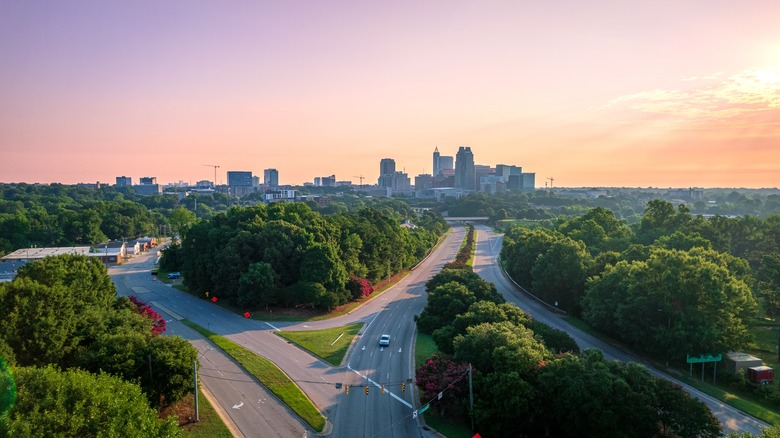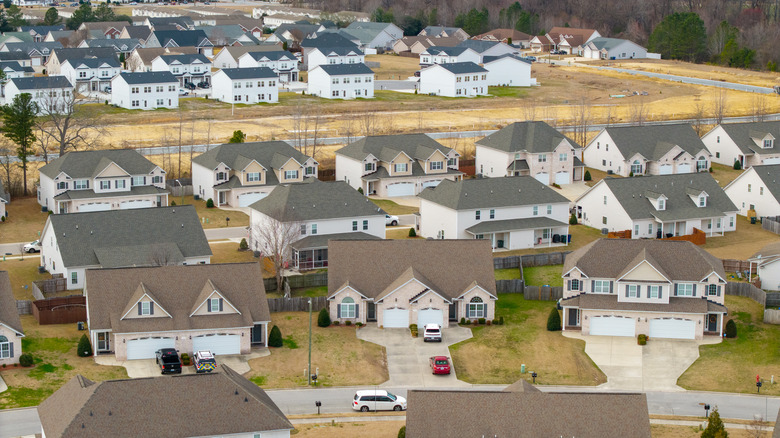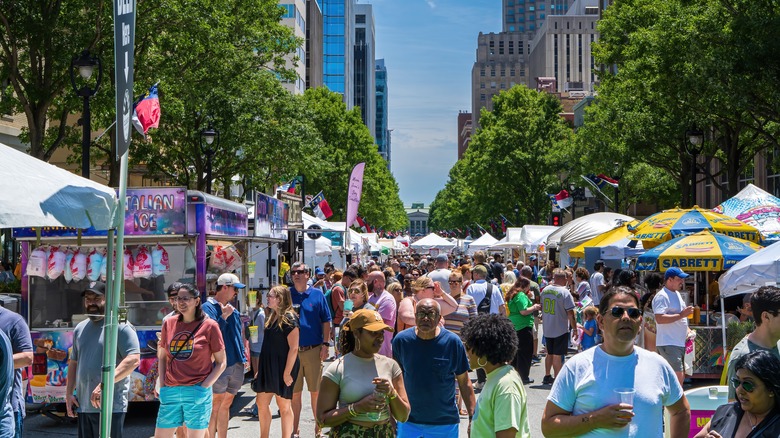This Popular US Vacation State Has Many Of The Least Walkable Cities In The Country
There are so many reasons to visit North Carolina. Travelers flock to the Outer Banks every summer, packing rental homes all along these 200 miles of islands and sandbars. On the western side of the state, the Blue Ridge Parkway is a beloved East Coast paradise for relaxed retirement road trips, and the Great Smoky Mountains straddle the border with Tennessee. In between, North Carolina is a patchwork of farmland and rolling hills, cities and towns, including the arts capital of Asheville and the historic coastal city of Wilmington. With its mild winters and subtropical summers, the Tar Heel State is a popular getaway in all seasons; a record-breaking 40 million people visited in 2024, bringing almost $1.2 billion into the local economy. Road trips, water sports, hiking, monuments — you'll find them all in North Carolina.
When you go, though, you'll want to drive. North Carolina does so many things well, but carefree urban strolls are a major exception. The company Walk Score produced a list in 2017 (via Money Talks News) of the least walkable cities in the U.S., and six of them were located in North Carolina: Raleigh, Greensboro, Durham, Charlotte, Winston-Salem, and Fayetteville. Granted, the list is several years old, and states like Texas and Arizona also had multiple low-scoring entries. Yet all of these towns still struggle to accommodate pedestrians, and many surveys have cited Fayetteville as the nation's single worst city for walkers, a distinction that is only starting to change. You may wonder how one state received such poor scores, and whether the reputation is still deserved nearly a decade later.
North Carolina's walkability problem
There's no single reason why North Carolina cities are so unwelcoming to walkers — and several factors may surprise outsiders. Population-wise, all of these cities are pretty modest. Even Charlotte, the largest, has fewer than a million residents, and the others are significantly smaller. Many of these cities are college towns, with thousands of students living on or around major campuses; as a rule, undergraduates are among the country's most consistent walkers and public transit riders. Indeed, the Blue Ridge college town of Boone is a walkable community with art, cabins, and unreal views. The temperature is forgiving in winter and during the shoulder seasons, and all of these cities offer some form of public transit, like the Lynx Blue Line light rail system in Charlotte and Raleigh's citywide bus system, with over 1,400 stops. About 6% of North Carolinians have no access to a vehicle at all, so surely someone is putting their shoes to good use.
One explanation is the state's rapid urban population growth: Charlotte gained 70,000 new residents between 2020 and 2024, while Raleigh gained 32,000 in the same period, and the four other cities also grew. More people are moving to North Carolina in 2025 than to any other state, and the average price of a new home is about $387,000 – well below the national average. To accommodate this influx, North Carolina's Department of Transportation is widening segments of Interstate 95 to six and even eight lanes, alongside a myriad of other motorway improvements. Critics say the rampant growth of suburban sprawl around these cities – housing developments, low-density commercial strips, chain stores, and restaurants — is rarely developed with pedestrians in mind, and distances can be untraversable.
Havens for walkers in North Carolina
Most visitors to North Carolina will bring or rent a car, so walkability usually won't be an issue. But many residents are working to change their urban layouts so tourists can park once and explore more on foot. Fayetteville Street in Raleigh (pictured above) is a popular corridor that was once pedestrian-only; although it reopened to motor traffic in 2006, it remains a hub for street festivals, parades, and public performances. Right outside Raleigh is the highly rated town of Cary, known for its walkable urban spaces and trendy eateries. Charlotte's Rail Trail is an 11-mile multi-use path that cuts right through the middle of the city, drawing more than 2,000 users per day. Even Winston-Salem, one of the state's smaller cities, has a vibrant (and walkable) Arts District in its compact downtown.
In short, North Carolina's cities do struggle with sidewalk appeal, but visitors can still enjoy these destinations without four wheels, as long as they know where to go. As spread out as these metro areas can be, they are all older settlements — by U.S. standards — with long-established downtowns. Meanwhile, places like Fayetteville are drafting plans to make their streets safer and more navigable for walkers. None of this change will happen overnight, and cars will continue to dominate streets for many years to come. But every journey begins with small steps.


